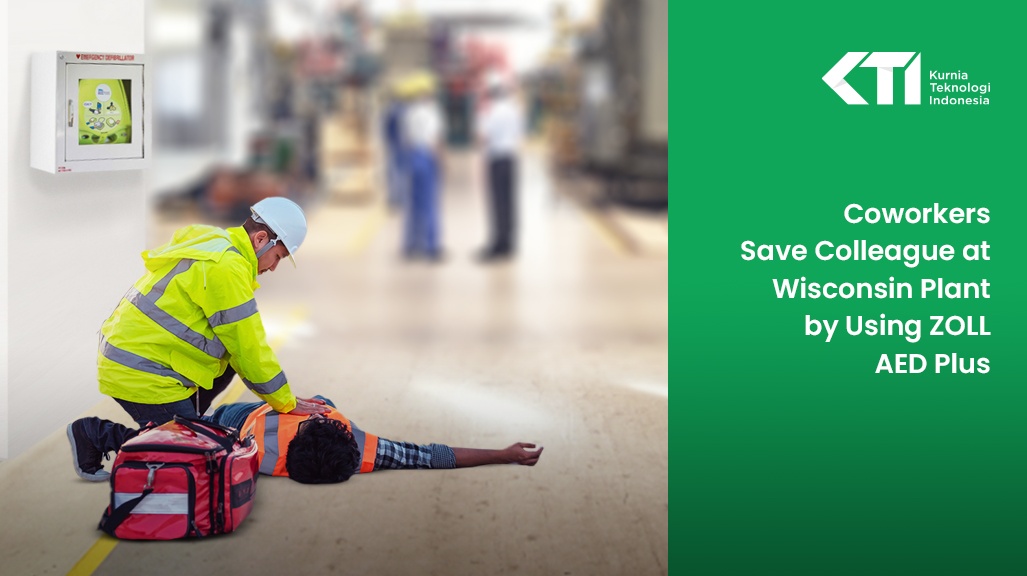Coworkers Save Colleague at Wisconsin Plant by Using ZOLL AED Plus
“Guy down,” echoed through the ink room of the Bemis Company in Boscobel, Wis. The operations partner at the plant had just witnessed his colleague collapse as he was bringing a pallet of ink to the press. The 60-year-old employee was lying on the floor turning blue and purple. His eyes were glazing over. He had no pulse.
A Well-Executed Rescue
The operations partner immediately alerted the plant’s environmental health and safety (EHS) manager, and employees sprung into action. One employee called 911 and contacted plant management, while the EHS manager performed an initial assessment on the victim and began cardiopulmonary resuscitation (CPR).
Another employee ran to retrieve the automated external defibrillator (AED) mounted on the wall 30 yards away, while yet another secured the valve mask for giving ventilations and cut away the victim’s shirt so he’d be ready to apply the electrodes when the AED arrived.
In the meantime, a number of employees shut down their equipment to reduce noise and chaos as well as cleared the area for the rescue team. A pair of employees ran to meet the rescue squad.
Once the ZOLL® AED Plus® arrived, the EHS manager briefly stopped CPR while a fellow employee hooked up the unit. One person continued to monitor the victim’s pulse as another immediately began monitoring the ZOLL AED Plus’ audio and visual prompts. The AED Plus soon advised a shock, which was administered.
While the employee response was immediate, the victim’s response to CPR and the shock was not. The EHS manager resumed compressions, as the AED Plus instructed. The AED provided him with feedback on the quality of chest compressions.
The adaptive metronome also helped him maintain the correct rate. Within 45 seconds, the victim took a deep, gasping breath. “It was pretty amazing,” he said. “It was the shock that brought him back to life. He went from blue to pink.”
As color returned to the victim’s face, the Boscobel rescue squad arrived and took control of the scene. They administered oxygen and kept the AED Plus attached in case it needed to be used again.
“The AED is so simple to use,” said the EHS manager. “Easy-to-read graphics, very clear directions, and clearly marked electrodes showing where to place your hands for chest compressions made it very easy to continue CPR. It directed us during a stressful time. The audio prompts worked well, giving us very clear instructions on the steps to follow and guiding us to the correct depth and rate of chest compressions. I got a few comments from employees afterward that if they had known how simple it was to use they would have gone through the training.”
A Well-Established Program
The response from employees went like clockwork because Bemis has a comprehensive environmental health and safety program in place. “Everyone knew just what to do since we had practiced drills,” said the EHS manager, who had been overseeing the program at the 170,000-square-foot plant for more than a decade.
While 10 employees participated in the actual rescue, several additional people were at the scene, trained in CPR, first aid, and the use of the AED, to offer help if needed.
Bemis opens health and safety training to all interested employees every two years. A local vocational college provides the training. The plant also holds an annual emergency response training program for those previously trained, which covers all environmental health and safety topics related to plant operations.
The program includes reviewing the use and maintenance of the AED. The plant also has a weekly AED inspection program to check the batteries and other components to make sure the units are at the ready.
Since the incident, nearly three times as many employees are now trained in CPR, first aid, and the use of an AED. Of the 125 plant employees, 66 are trained. “This is one program that is worth the effort,” added the EHS manager, who had been a volunteer emergency medical technician (EMT) for more than 20 years. “Benefits from the persistence of training and maintaining the equipment are appreciated when you see the survivor back to work and living beyond the incident.”

